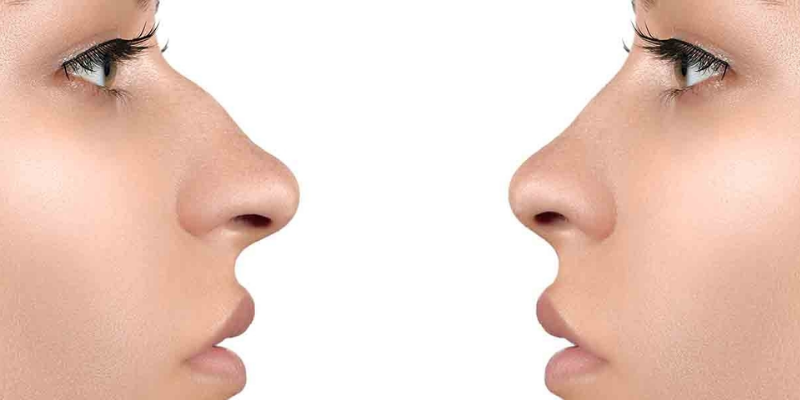Rhinoplasty Surgeons
Surgery called rhinoplasty is used to change or improve the shape of the nose. One of the most well-liked cosmetic surgery procedures is rhinoplasty, also known as “nose reshaping,” which is performed all over the world. The nose’s overall symmetry, as well as its length, width, contour, tip, and nostrils, can also be changed through rhinoplasty by rhinoplasty surgeons. Cosmetic rhinoplasty is referred to as a “nose job” by renowned rhinoplasty surgeons. Occasionally, doctors will recommend rhinoplasty for medical causes, such as repairing the structure of the nose to improve breathing.
A common but significant procedure with many risks and the potential for failure is rhinoplasty. You could be treated in less invasive ways. Before having a rhinoplasty, you might want to go over all of your treatment options with a different doctor.
Best Rhinoplasty Surgeons In The World
Rhinoplasty, also referred to as a “nose job,” is a common cosmetic procedure that alters the size and shape of the nose for aesthetic reasons.
Rhinoplasty will only be suggested by your doctor if other, less troublesome treatments have failed due to a medical condition. Talk to your doctor about all of your treatment options, and think about getting a second opinion. Regular rhinoplasty practitioners include the following:
Face plastic and reconstructive surgeons are experts at treating facial conditions that affect a person’s appearance or capacity to perform particular functions, like breathing through their nose.
head and neck Head and neck conditions that might affect a person’s appearance and ability to perform their job can be expertly treated by plastic surgeons. Plastic surgeons are experts at treating a variety of physical conditions that affect a person’s appearance or capacity for work.
Best Rhinoplasty Surgeons For Each Ethnicity
Your doctor will perform rhinoplasty by making a cut close to or inside your nose in order to reposition the cartilage and bone in your nose. In order to reconstruct your nose through surgery, your surgeon will likely remove some of the cartilage from it and replace it with cartilage from the inside of your nose, or, less frequently, from your ear or rib. ASo, n their clinics, hospitals, or outpatient surgical facilities, surgeons perform rhinoplasty.
In minimally invasive surgery, tiny incisions are made in the nostrils to make room for the insertion of specialised tools. Compared to open surgery, recovery from minimally invasive surgery is typically quicker and more comfortable. This is because it doesn’t cause as much damage to the tissues. Instead of one large incision like in open surgery, your surgeon will make several smaller ones. The surgeon can then thread surgical instruments around bone and cartilage rather than cutting through or working on them as in open surgery.
During open surgery, the columella, a slender strip of skin between the nostrils and above the upper lip, is cut. With an open surgery incision, your doctor will be able to see and reach the surgical area more easily. Compared to minimally invasive procedures, open surgery typically involves more pain and requires a longer period of recovery. The tissues’ increased injury is the cause of this. Open surgery necessitates a larger incision and more tissue cutting and repositioning than minimally invasive surgery. But for some patients, open surgery might be more advantageous or safer.
How To Get Ready For Rhinoplasty?
Speak to a pre-op nurse in the operating room. A physical examination and all required tests will be carried out under the nurse’s supervision. The nurse can also answer any queries you may have and make sure you understand and have signed the consent form before the procedure.
Put on a medical gown and remove all of your clothing and valuables. If at all possible, leave jewellery and other valuables at home or with a family member. The surgeons performing the procedure will cover you with blankets to keep you warm. The anesthesiologist or nurse anaesthetist should be informed of your medical history and the type of anaesthesia you will receive.
Best Rhinoplasty Surgeon In Arizona
Your doctor may occasionally perform both an open surgery and a minimally invasive procedure. However, your surgeon may decide that an open procedure is required to finish your surgery in the safest and most effective way after starting a minimally invasive procedure.
Most of the time, rhinoplasty does not require hospitalisation. When deciding which type of rhinoplasty is best for you and whether you need to stay in the hospital, your doctor will take a number of things into account. Your age, medical background, general health, diagnosis, and possibly even personal preferences are among them.
During general anaesthesia, a cocktail of drugs and gases is injected directly into your veins to put you into a deep sleep. You won’t feel any pain, and you don’t know what will happen. Nerve block is another name for a specific type of regional anaesthetic. The doctor or nurse will administer anaesthetic injections to the skin and tissues surrounding your nose. Additionally, an IV sedative may be given to you to help you unwind and feel comfortable. You might fall asleep and lose track of how to complete tasks.


